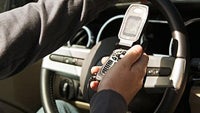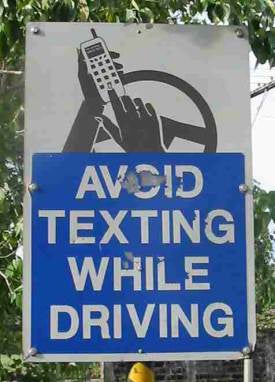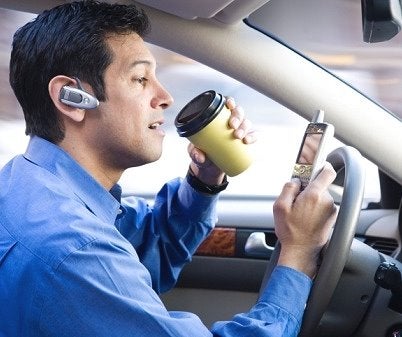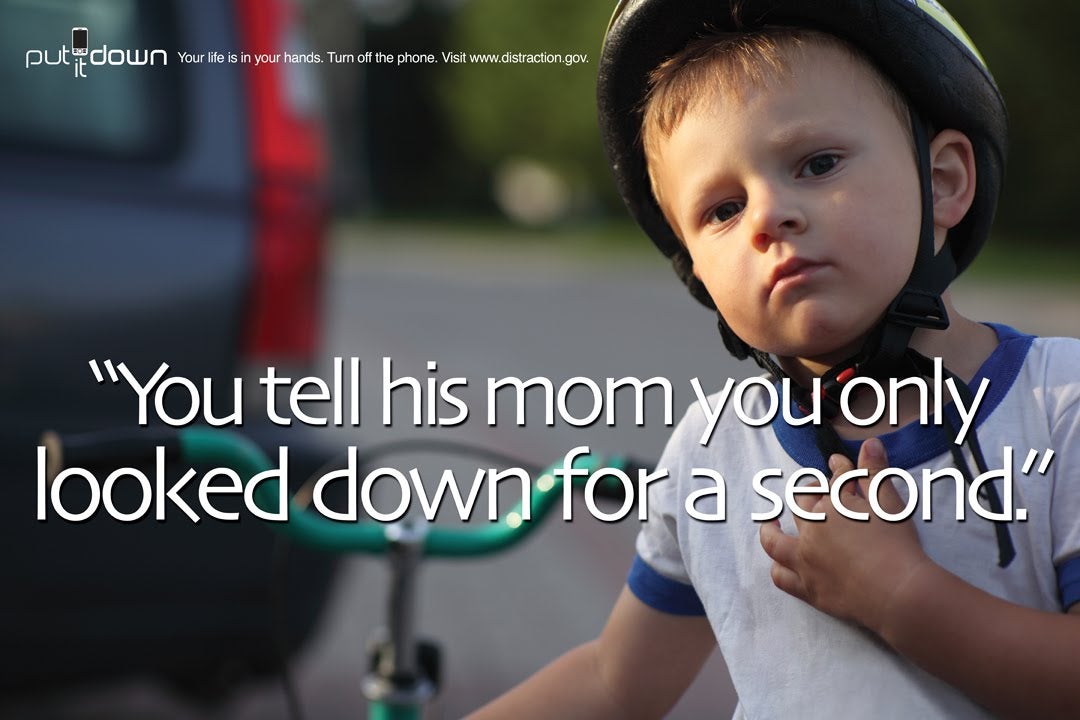Turning on the television or reading the newspaper, there’s probably not a single day that goes by without some sort of headline somewhere near the front page that details a horrific story of some kind caused by distracted driving. At the very least, we hear about minor fender-benders from time to time, but in more serious cases, fatalities are generally involved – thus, it deeply ingrains into our minds how serious the problem really is. So what’s the culprit in it all? Well, it’s actually our everyday mobile phones that are near and dear to our hearts that are causing the majority of the problems.
By now, just about every state across the nation is enforcing some kind of law banning the use of mobile phones while operating a vehicle, but in all honesty, it’s not having the profound effect that it so desperately needs. On any given day while taking a drive in a car, we can count on numerous occasions when we see someone blatantly yapping away or texting on their cell phone in the lane next to us. Call it brash, or call it a complete disregard of the law, these individuals are doing it mainly because there is obviously no one there to give them a ticket for committing the act.
However, you can’t completely blame them simply due to the fact that we have this undying urge to use our phones. C’mon, there’s this unseen temptation of some kind that envelops us whenever we get behind the wheel and have our mobile phones besides us. Whether it’s an important phone call that needs to be picked up or having to get directions with GPS, it can be very difficult for some to lay off their devices completely. And of course, the other problem is that some people are inclined to commit a wrongdoing simply because they know they can get away with it. Unless there’s a police officer on-site or some kind of camera system in play, we’ll continue to see people doing something on their phones while behind the wheel.
So what’s there to combat or reduce distracted driving? Well, as we all know,
Bluetooth technology has been incorporated into just about every device under the sun by now. From the basic to the most high-end, Bluetooth enables anyone with a mobile phone to pair with a wireless headset of some sort to chat away while driving. Yet, we feel that it’s not really dealing with the problem, as our focus is still taken away from the road ahead of us. Sure they’re out to offer a “
hands-free” experience, but how about the times when we’re getting a text message or email? Well, some smartphones employ technology that’ll announce messages through the headset, and even better, they can even do speech-to-text. Indeed they’re great and all, but in our experience, they’re not always one-hundred percent accurate – thus, we’re again tempted to interact with our phones.
Additionally, another good example of distracted driving can be found with
turn-by-turn navigation. At night, you can probably see the inside of a vehicle glowing brightly thanks to a GPS or smartphone placed directly in the middle of the dashboard. Obviously, they do wonders in getting us to places without getting lost, but in the literal words of distracted driving, they momentarily relinquish our focus on driving in order to see if we’re heading in the correct direction. Sometimes, we generally rely more on audio directions given to us by our GPS app – though, it’s not always timed correctly for specific turns. When you think about looking at those directions on-screen, you might not have thought of it as much before, but there’s at least a second squeezed somewhere in there that takes our mind off the road in front of us. And it’s that exact moment that can make all the difference in what can happen – yet, we continue to do it all the time.
More recently, we’ve started to see many apps that limit or lock certain phone functionality while driving – such as
Sprint’s Drive First app and
T-Mobile’s Drive Smart app. Generally, they rely on the handset’s built-in GPS to sense motion to activate – but it’s already setting itself up for disaster with that. So what happens when you’re in a train or simply a passenger in the back of a car? Are you left to be locked out of using your phone then? Well, not exactly. That’s because some people might disable these apps entirely to reduce the frustration of having to turn them on and off for specific scenarios – and that’s exactly where it’s setting itself up for failure again. Adding yet more fuel to the fire, some of these apps require monthly subscriptions that you need to pay in order to use. Call it a double whammy or whatever, it’s indeed not helping the issue at hand, but rather, it’s perpetually bringing us in circles.
Rather than allowing technology to deter our desire to better the situation, it’ll be interesting to see how companies take on the problem in the coming years. No doubt Bluetooth headset manufacturers will continue to develop ingenious ways to reduce our distractions, but we’d like to see some drastic results.
In the end, it’s still the individual that’s going to be making the decision in what they do behind the wheel. Naturally, muting your cell phone can essentially stop the problem from even developing from the beginning – however, that’s the struggle we all face on an everyday basis. Seriously, if you’ve been oblivious to this rising dilemma, just count how many people you see on the road using their phones during a one-way commute to work. Trust us, the number you get will astound you, but more importantly, it’ll show you how prevalent this issue really is in our society.















Things that are NOT allowed: